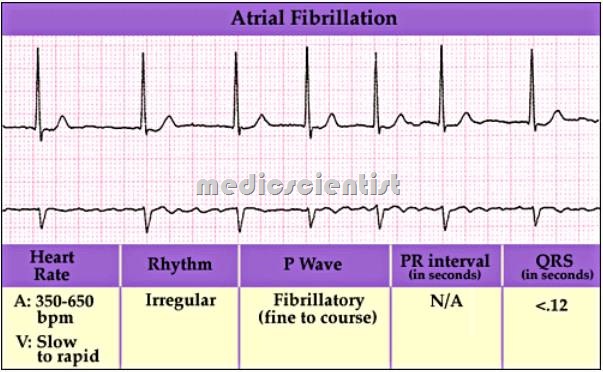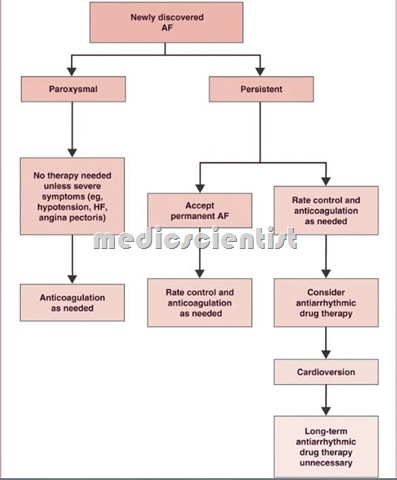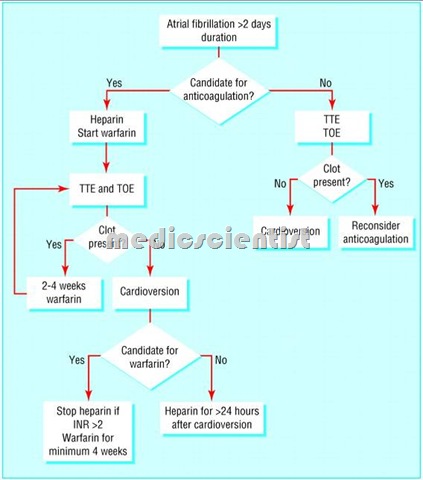Atrial fibrillation TACHYARRHYTHMIAS Indications of DC Cardioversion —
Cardiovasculer examination, RRHYTHMIAS, Sinus Tachycardia
Atrial fibrillation is recognized by :
- ·Absence of P waves
- ·P waves re laced by fibrillatory waves or undulating baseli~at frequency 350-600 perminute
- R waves irregularly irregular and of varying amplitude
- QRS normal.
Causes Of Atrial fibrillation :
- Emotional stress
- Acute alcoholic intoxication
- Hypercapnia
- Chronic lung disease
- Lone AF
- Exercise
- Hypoxia
- Mitral valve disease
- ASD
- -Hypertensive heart disease
- Thyrotoxicosis
- After surgery
- Vasovagal reaction ~RHD
Treatment
- Treat the cause, remove the precipitating factor.
- If clinical status is compromised – electrical cardioversion.
Drug therapy of atrial fibrillation
- Esmolol, or Esmolol + Digoxin.
- Ibutilide can convert AF to sinus rhythm.
- 1 mg is iven in 10 minutes, and may be repeated in 20 minutes.
- Cannot be given if serum potassium low or QT is prolonged as there is risk of torsade de pointes. QT interval should not be more than 440 msec and serum potassium should beabove 4 meg.
- If AF is for more than 2 days, then cardioversion with Ibutilide attempted only after anticoagulant therapy has been given for 4 weeks
- Dofetilide is another good drug for cardioversion to sinus rhythm.
Contraindications —
- QT interval more than 440 msec
- Thyrotoxicosls
- CHF (congestive heart failure)
- Digoxin + Disopyramide for conversion to sinus rhythm.
- If severe LV dysfunction is present then disopyramide is not used.
Conditions of DC cardioversion in cases —
- · Failure of drug therapy
- · Hypotension
- · Sotalol
- · Anticoagulants to prevent embolization.
- · Rapid ventricular rate
- · Heart failure
- · Amiodarone
Indications of DC Cardioversion in AF —
- .Heart rate> 150 per minute causing heart failure, chest pain, cardiogenic shock.
- Patients with HOCM or severe AS – where atrial function is required.
- AF in WPW syndrome.
For refractory atrial fibrillation
- Ablation therapy.
- Problems like pulmonary vein stenosis, pulmonary hypertension and stroke can occur
- Maze procedure.
- Multiple lesions are made in the right and left atria to break electrical conductance and stop propagation of fibrillatory waves.




